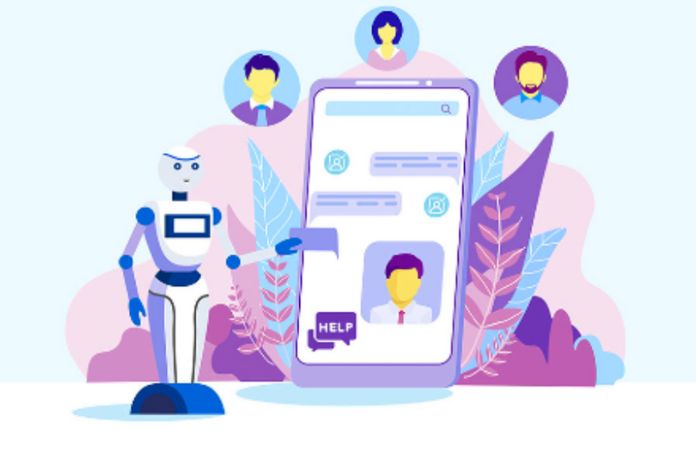Chatbots deployment is usually associated with customer support. But as mentioned, the tool is also capable of serving other areas of the company very well, such as:
- Marketing;
- Sales;
- Attendance;
- Human Resources (HR);
- Internal communication.
Marketing
In marketing, chatbot deployment has two primary missions: increasing audience engagement and converting users into leads.
But in addition, the tool can also be used to:
- Capturing, qualifying, and nurturing leads;
- Manage the shopping journey;
- Improve the company’s image before the public;
- Collect data about the target audience from interactions.
Sales
In the sales sector, the chatbot provides practical assistance in all processes, from prospecting to post-sales.
You know that lead that filled the cart with products and didn’t make the purchase? The chatbot is ideal for getting in touch and finding out what happened.
And during the order delivery process, your customer is reassured by being updated on the status by Whatsapp. In addition, the tool can still assist in the collection sector, making the situation less uncomfortable for the customer.
Internal Communication And HR
Implementing a chatbot can also significantly optimize the company’s internal communication and Human Resources sectors.
In this sense, the chatbot for HR can:
- Answer questions from new employees;
- Create a system of requests to HR simply and automatically;
- pass on information;
- Send reminders;
- Perform cadastral update;
- Create questionnaires for vacancies.
Attendance
The optimization that the chatbot provides to companies is undeniable in terms of customer service. With it, you can provide 24/7 support to your customers so that common questions and simple problems are quickly resolved. But, in addition to the benefits mentioned so far, there are still others. Check it out below.
Benefits Of Deploying Chatbots For Customers
Chatbots are tools that emerged from the digital transformation and whose main objective is to improve the customer experience and their relationship with the company.
And to achieve these results, the technology offers:
- Agile service;
- Significant reduction in waiting time for service;
- Efficient and fast solution for support cases.
But, customers are not the only ones to benefit from chatbot deployment.
Benefits Of Deploying Chatbots For Companies
For companies, in addition to improving customer relationships, increasing satisfaction, and contributing to their loyalty, there are other benefits for the team, such as the optimization of internal processes . follow-up.
Productivity
Deploying a chatbot allows repetitive tasks to be automated, frees up your team to take care of more strategic matters, and makes them much more productive.
Cost Reduction
From the chatbot deployment, it is not necessary to maintain a fixed service team all the time. Technology solves the most straightforward problems; keeping employees only to solve more complex situations is necessary. In this sense, there is a reduction in labor costs in the company’s monthly budget.
Another point to be highlighted is the savings obtained in the Customer Acquisition Cost (CAC). This is because the chatbot can reach a much larger number of leads in much less time, in addition to being a more discreet and less intrusive way of contacting the customer to offer products or services.
Flexibility
The chatbot allows you to go where the customer is. Integrating the technology with different tools, such as Messenger, WhatsApp, and Telegram is possible.
In this way, the company can strengthen the relationship with the customer, promoting a more friendly interaction, which has much more potential to generate conversions.
Scalability
Another point to be highlighted about the chatbot implementation is that it is a highly scalable technology since the bots can perform more than one service at a time.
Creating A Database
From the interaction of customers with chatbots with artificial intelligence, it is possible to create a database with information that reveals the type of language, profile, and customer preferences to serve them better.
Also Read: Digital Transformation And Customer Belief For Service

